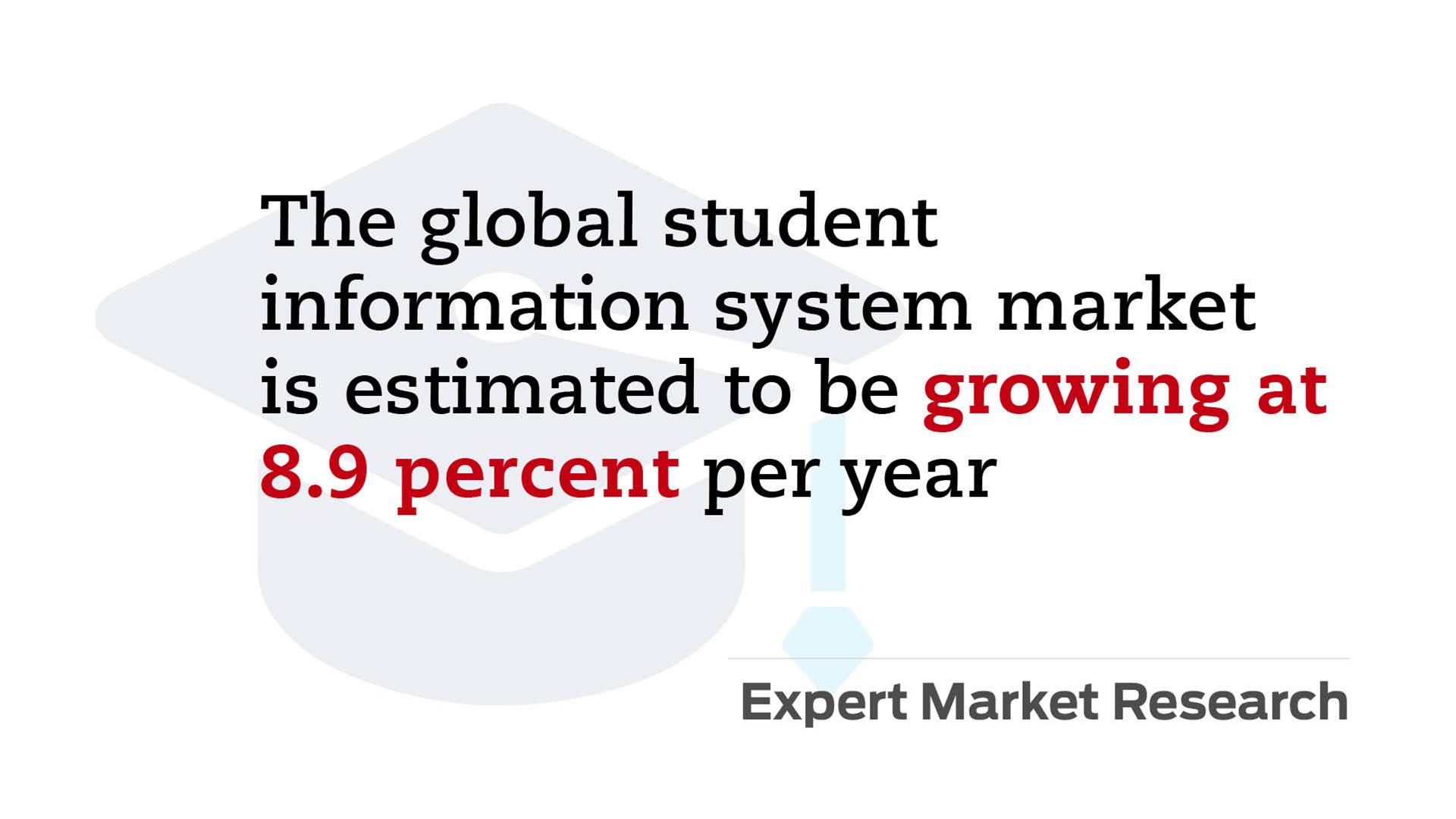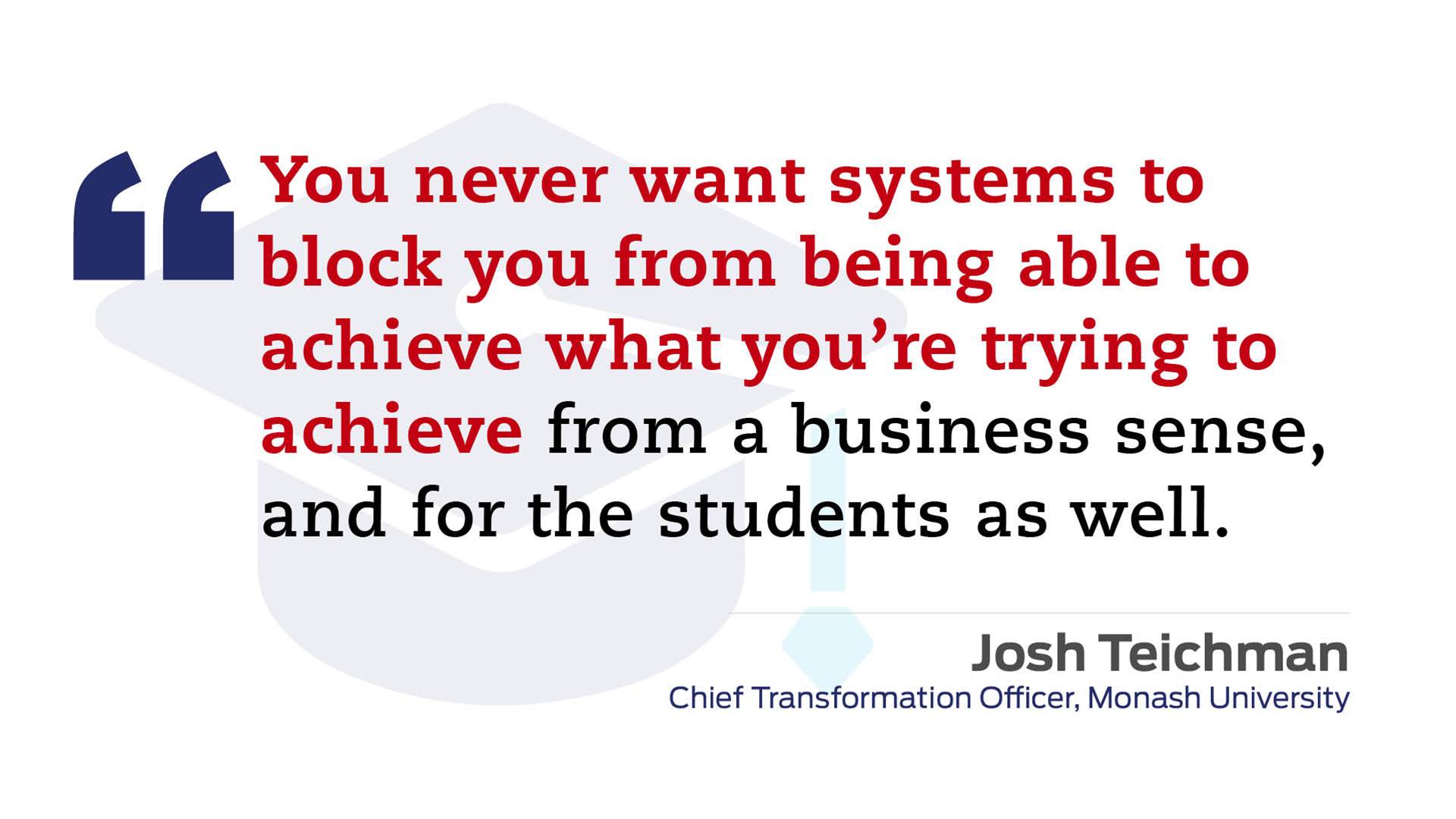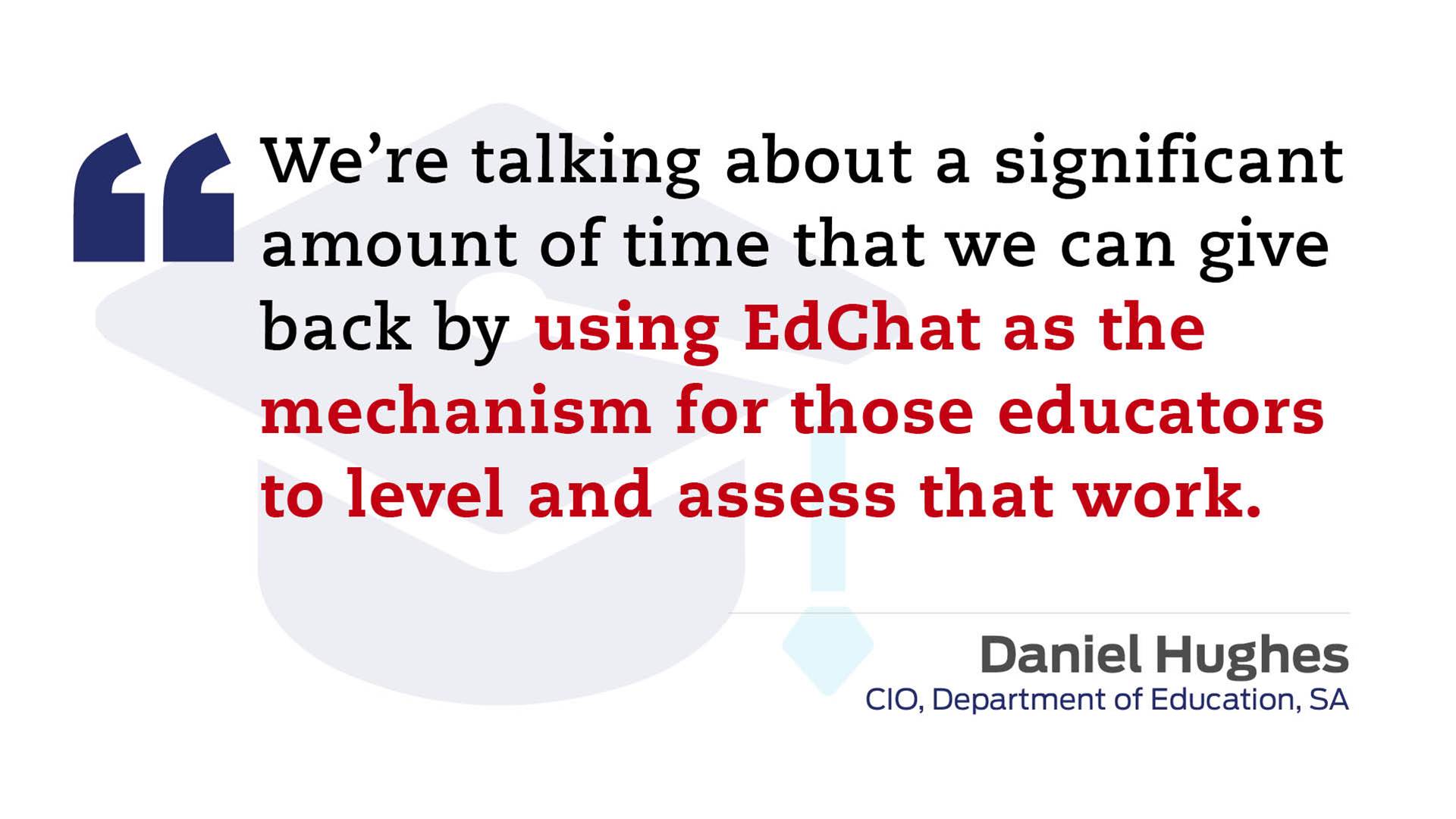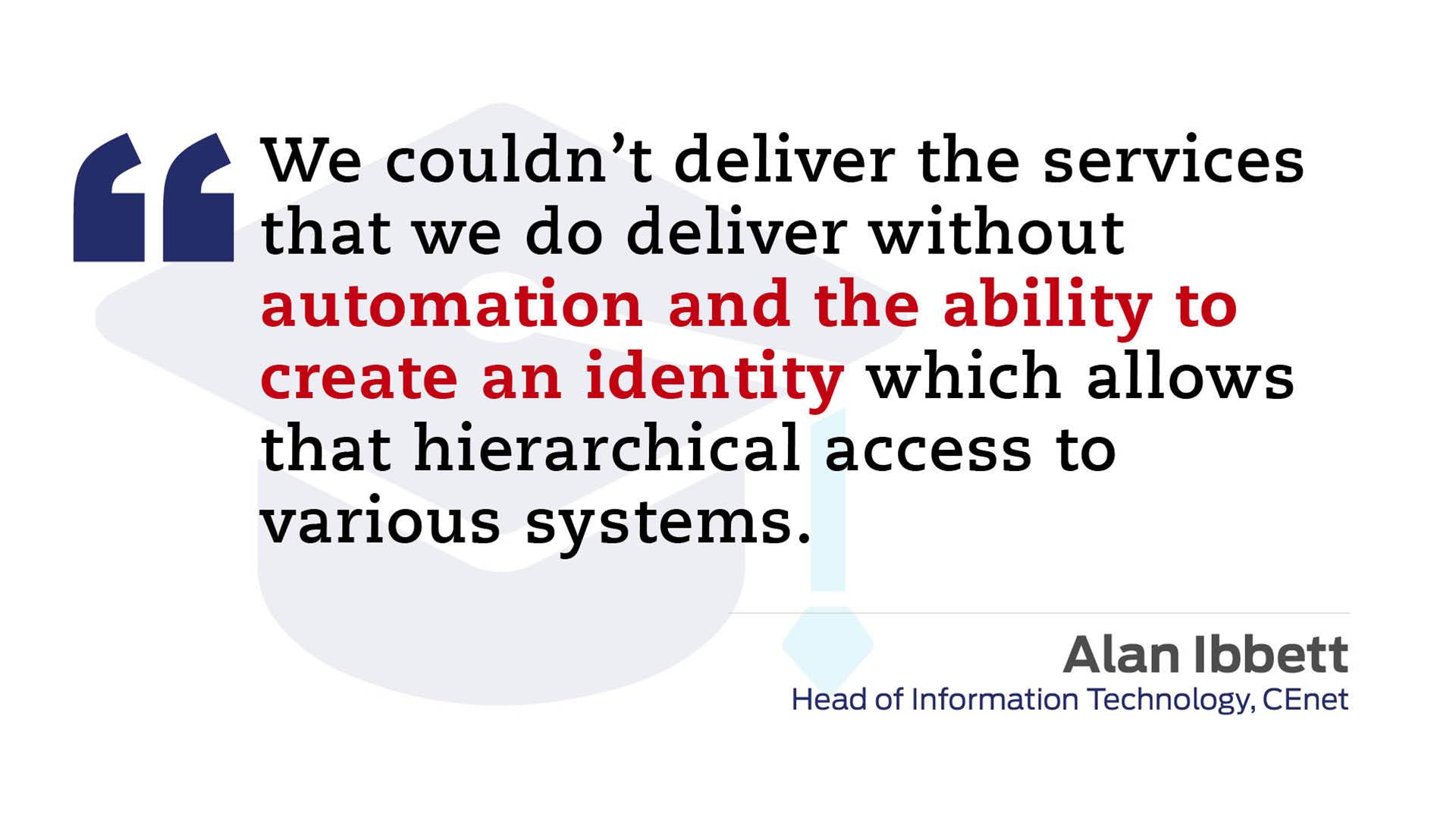
Education is a big market for technology providers in Australia, with a 2024 value of between US$3.9 billion ($6 billion) according to IMARC GROUP and US$4.1 billion ($6.3 billion) according to GlobalData.

While that estimate covers everything, from hardware and networking to education software used both in and outside of the classroom, education presents a clear opportunity for technology providers in a market segment whose total value is estimated by Expert Market Research to be growing at 8.9 percent per year.
One of the key areas of spending within the education technology market is on the systems and platforms that now underpin modern education providers.
While much of the focus for technology in education has been on its use in learning, schools themselves now resemble small to mid-sized businesses in terms of their technology usage, with some universities counted amongst Australia’s biggest technology spenders.
Delivering education outcomes
Indeed, the scale of universities in terms of revenue and staffing means their requirement for complex finance, human resources and asset management systems is not dissimilar to other large organisations.

This thinking is demonstrated at Monash University, where staff will soon benefit from numerous technology investments. The university has commenced deployment of the Ellucian Banner student information system, and is implementing a new time and attendance system across its workforce, in line with its ambition for technology to truly support staff.
According to chief transformation officer Josh Teichman, the goal was for all staff to be able to do the absolute best they could do.
“If you're a researcher, I want you to be able to solve the big challenges of the age,” Teichman said.
“From a learning and teaching perspective, it's about delivering the best experience to students in a pedagogically-sound way.
“And if you're an administration professional or a staff member, it’s about how we empower you to be working on really high value work and not doing the manual stuff all the time.”
Teichman stressed that a core reason for these investments was the belief that progress should never be held back by systems.
“We launched the Indonesia campus in 2021, and that meant international currencies, other languages, and all sorts of downstream things in terms of systems,” Teichman said.
“You never want systems to block you from being able to complete what you're trying to achieve for students, the research agenda as well as for the academy.”

A similar story is told at Charles Sturt University (CSU), where executive director for student experience Sandra Sharpham said the implementation of a new student management system was expected to reduce staff workloads.
“A big part of what we're doing is working towards business process automation,” Sharpham said.
“We've been doing work in the upfront inquiry management space, building knowledge so that queries can be taken care of through self-service. That's releasing staff so they can deal with the complex queries and bring in the human service where that is most needed.”
This capability would be further enhanced through the introduction of AI to support seamless customer experiences.
“We have introduced an AI chatbot that is drawing on our QA knowledge so that students are getting the correct information,” Sharpham said.
“We've had that in for just under 12 months. When we first introduced it, we saw about 30 percent of queries were coming in after hours. We're now up to over 50 percent of queries coming in outside business hours and getting resolved.” - Sandra Sharpham, executive director for student experience, Charles Sturt University
Intelligent future
AI is providing a difficult challenge for education, where the desire to embrace the future can clash with the need to deliver a robust learning environment and safeguard the needs of students, meaning many institutions take a cautious approach to unproven technologies.
From an administrative perspective however, generative AI holds the promise of providing new methods of interaction with information which can potentially free up human staff from routine tasks such as answering queries.
This benefit is being explored in detail at the Department of Education, Victoria, where an AI-powered chatbot is supporting staff with accessing policy information.

Chief information officer Elizabeth Wilson said success at the proof-of-concept stage meant the chatbot was now being put into production, and this was just one of a number of ideas in development.
“The Department is currently developing the appropriate governance frameworks and processes to support safe use of generative AI in schools with a major focus on where it can assist in reducing the administrative burden for teachers and principals,” Wilson said.
“This will enhance the student experience through optimising face-to-face teaching time.”
She said the department was looking to create numerous POCs that would address inequity for students, such as by providing access to personal tutoring.
“There is not a lot of research evidence about the use of artificial intelligence by educators and students, so we are keen to take an evidence-based approach to the use of AI,” Wilson said.
“The tech environment can be incredibly difficult to navigate for teachers, and we need to support them better by providing them with products that meet their needs in the classroom.”
But the need to incorporate AI into education systems, and the complexity involved, raises a significant challenge for cash-strapped education departments, who cannot easily afford the skills of experienced AI professionals.
“These are very difficult times with substantial increase in demand for technology services,” Wilson said.
“We are looking to focus on applying automation and AI to free up resources and budget to focus on the emerging needs of the department and schools.
“We believe there are considerable productivity gains to be had if we go about this in a planned, focused way – looking at the low hanging fruit that can be done quickly without additional investment, then to more complex areas that would benefit from a rethink as to how we do IT.”
Pushing AI boundaries
One of the earliest jurisdictions to take on the challenge of investigating AI’s potential is South Australia, which launched its own AI system in conjunction with OpenAI and Microsoft in 2023.
The chief information officer for the Department of Education, South Australia, Daniel Hughes said work on its EdChat AI was now providing opportunities for teachers to create their own apps to share with colleagues.

One example related to the teaching and assessment of English as a Second Language. Hughes said the existing system required teachers to assess each student’s capability to determine what level of support funding might be available to them – a process that could take more than 90 minutes per student. One teacher used EdChat to automate the assessment against best practices and the reporting process to produce a report in under a minute.
“We're talking about a significant amount of time that we can give back by using EdChat as the mechanism for those educators to level and assess that work,” Hughes said.
“We've been very, very stringent in terms of making sure that the right parameters are in place, and that time is allocated so the educator can go back to and double-check the result.
“We are not saying AI will take away the role of a teacher, but if it can simplify administrative tasks and enable educators to focus on more ‘value add’ activities that directly benefit student learning and comprehension, then we think we are on to something.” - Daniel Hughes, CIO, Department of Education, SA
A secure learning environment
The cautious approach to technology is also reflected in the critical need to ensure that students were safeguarded through their interactions with the digital world.
Schools have increasingly been the target of cyber attacks globally, with the UK’s Office of Qualifications and Examination Regulation (Ofqual) highlighting that more than a third of schools and colleges in England had experienced a cyber incident during the last academic year.

The Department of Education, Victoria’s Wilson said shift to cloud-based systems had heightened the need for data protection, with the department implementing the Information Barriers compliance solution from within Microsoft Purview, ensuring each student is separated within the Microsoft tenancy, in an implementation that has been described as the most complex implementation performed anywhere in the world.
“The Securing Connected Learners program seeks to support schools through central management of identity and Microsoft and Google platforms that incorporate all the security, privacy and child safety controls that are needed,” Wilson said.
The need for improve security within school systems is being felt at all levels. For the majority of Catholic schools across Eastern Australia, cyber security is the responsibility of CEnet, a not-for-profit organisation that provides a common network and learning architecture across metropolitan, regional, and rural dioceses.
“There's a whole bunch of effort here,” said CEnet’s head of information technology, Alan Ibbett.
“We've invested in enhanced firewalls and filtering, and privilege access management. It's all got to come together - you can’t just have one technology.
“We’ve also invested in user training. No matter who you are, you go through training.”
Ibbett said one of the critical tasks within his remit was the need to ensure that all users could be identified and matched to appropriate levels of access, using technology from identity specialists Okta.
“One minute you might be a student, and the next minute you might be a teacher, and next you might be an administrator, and then you might turn up in another diocese in a completely different role,” Ibbett said.
“We couldn't deliver the services that we do deliver without automation and the ability to create an identity which allows that hierarchical access to various systems.”
Education Champion
We are proud to present the 2025 Education Champion.








